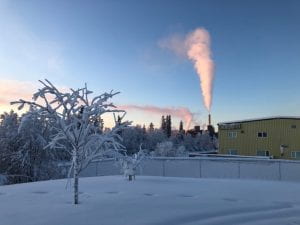Our research group studies a wide range of aerosol properties and processes that influence their environmental impacts through the development of novel air-sampling instruments and analytical techniques. An example of some of the research projects and environmental questions we are looking at include:


What are the optical characteristics of wild-fire or prescribed burning smoke, how do these properties evolve as the plume disperses and what are the effects on the global radiation balance? We are specifically focusing on the relatively new topic of colored organic aerosol species, referred to as Brown Carbon (BrC). A number of studies are addressing these questions. We participated in the NASA ATom mission that involved aircraft sampling pole-to-pole in four separate seasons (https://espo.nasa.gov/atom/content/ATom) and studies of smoke evolution in Western USA wildfires as part of the NASA FIREX-AQ study (https://espo.nasa.gov/firex-aq/content/FIREX-AQ). Both involve collecting data from the NASA DC-8 research aircraft. We are also working on characterizing more aged smoke produced from prescribed fires.

What are the sources of PM2.5 particles that lead to poor air quality in Fairbanks, Alaska? Recently we discovered that a sulfur species (hydroxymethanesulfonate) can be a significant component of PM2.5 aerosol particles. It had been interpreted as sulfate in past studies. This has implications on how to develop effective air quality improvement strategies. We will also investigate the toxicity of PM2.5 aerosol particles in Fairbanks and contrast outdoor and indoor air quality. These are part of many topics being investigated.

What species of PM2.5 are most detrimental to human health and well-being, how does one measure a particle’s potential health hazard, and how do atmospheric processes alter particle toxicities after they are released? A curious feature of atmospheric aerosol particles is how toxic they are and how wide-ranging their adverse effects are to people. Inhaling PM2.5 is linked to various respiratory and cardiovascular diseases, reduced child birth weight, and cognitive impairments, just to name a few. One possibility is that all of these are related to an inflammatory response resulting from oxidative stress, which is caused by specific particle components. Soluble iron (WS-Fe) is one example, specific organic species, such as brown carbon, from biomass burning are another. Understanding the sources and processes that form these aerosol particle components will help minimize their adverse effects.
New research projects involving both ground-based and airborne studies are being planned. Interested graduate students or post-doctoral researchers are welcome to inquire about upcoming opportunities.